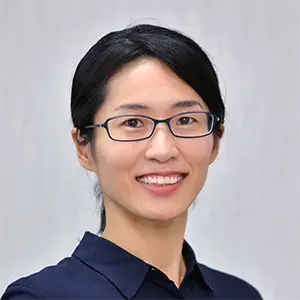Divisions & Teams
RIKEN BRC conducts the following three Programs:
- Bioresource Infrastructure Program focusing on five important bioresources of the world’s highest level and their associated information.
- Key Technology Development Program in order to effectively, efficiently and sustainably conduct the Bioresource Infrastructure Program.
- Bioresource Frontier Program in order to respond appropriately and timely to social and research trends and needs.
Bioresource Infrastructure Program
Six Divisions in these programs conduct R&D to improve infrastructure of the respective bioresources and associated information.
Experimental Animal Division
Division Director
Atsushi Yoshiki, Ph.D.
Animal models for understanding of sophisticated life phenomena, promoting human health and conquering diseases
R&D: Genome-edited KO and KI mice
Experimental Plant Division
Division Director
Taiji Kawakatsu, Ph.D.
Harnessing the Potential of Plants for a Sustainable Future
R&D: Enhancing environmental resilience and productivity through the regulation of gene expression
Cell Engineering Division
Division Director
Kazuaki Nakamura, Ph.D.
From basic life science research, clinical research to innovation
R&D: Reconstruction of biological functions and development of disease models through the use of cell culture systems.
Gene Engineering Division
Division Director
Yoshihiro Miwa, Ph.D.
Learn from living things and use their power
R&D: Development of gene transfer and expression system and stable vectors. Development and improvement of genetic resources of extracellular matrix (ECM)
Microbe Division
Division Director
Moriya Ohkuma, Ph.D.
Promotion of researches on health and environment
R&D: Isolation, identification and characterization of novel microbial species including microbial symbionts and fastidious microorganisms
Integrated Bioresource Information Division
Division Director
Hiroshi Masuya, Ph.D.
No Information, No Resource
R&D: Visualize analyzed results of genome information, disease states and images of biological dynamism, and develop novel methods for utilization of bioresources
Support Unit for Quality Management
Unit Leader
Masatomo Kobayashi, Ph.D.
To ensure that BRC continues to be trusted by users
Business: Achieving the world’s highest level of quality of bioresources through the PDCA cycle in cooperation with Divisions
Key Technology Development Program
We execute research and development strategies to create the key technologies necessary for bioresource infrastructure. Specifically, we are developing techniques for cryopreservation, nuclear transfer, ICSI, and generation of mouse models and high-quality stem cell lines. We also develop mouse phenotyping technologies and adds phenotypic information to the BRC’s mouse resources, and support mouse phenotyping of domestic researchers with the international standard phenotyping platform.
 Integrative Developmental Engineering Division
Integrative Developmental Engineering Division
Division Director
Kimiko Inoue, Ph.D.
Research for life cycle and development of advanced embryo manipulation technology
R&D: We aim to understand phenomena that occur during our life cycle and apply this knowledge to the maintenance and supply of high-quality bioresources
 Mouse Phenomics Division
Mouse Phenomics Division
Division Director
Masaru Tamura, Ph.D.
Research and development of technologies for mouse phenotyping
R&D: The Mouse Phenotype Analysis Division develops new technologies for mouse phenotyping and adds phenotypic information to the BRC’s mouse resources. As Japan Mouse Clinic, we also provide research support for mouse phenotyping to domestic researchers using the international standard phenotyping platform.
Bioresource Frontier Program
Based on the strength of our five world-class bioresources, we conduct research and development projects that promote breakthroughs in the life sciences, through internal and external collaborations with academia and companies.
 iPSC-based Drug Discovery and Development Team
iPSC-based Drug Discovery and Development Team
Team Director
Haruhisa Inoue, M.D.,Ph.D.
Facilitating practical and general uses of disease-specific iPS cells
R&D: iPSC-based Drug Discovery and Development Team works to establish drug discovery and development by utilizing disease-specific iPS cells.
- Using iPS cells of RIKEN BRC to develop infrastructure technology for drug discovery and development
- Innovating the technology that will open an avenue for practical and general uses
- Bridging disease-specific iPS cells and academia / industry in the field of translational research
 iPS Cell Advanced Characterization Research Team
iPS Cell Advanced Characterization Research Team
Team Director(concurrent)
Toshihiko Shiroishi, Ph.D.
iPS Cell Advanced Characterization and Development
R&D:
- Advanced characterization of iPSC lines available from RIKEN BRC
- Generation of modified iPSC lines
- Disease modeling and drug development using disease-specific iPSC lines
- Development of new technologies on cell culture, handling, and analysis
 Next Generation Human Disease Model Research Team
Next Generation Human Disease Model Research Team
Team Director
Takanori Amano, Ph.D.
Next Generation Human Disease Modeling
R&D: The Next Generation Human Disease Model Team develops disease model mice and evaluates disease states for intractable diseases designated by the Ministry of Health, Labor and Welfare in Japan, as well as diseases with large social burdens such as age-related diseases and lifestyle-related diseases. Due to advances in genome analysis technology, many patient-specific disease variants have been found. However, it is still unclear how these variants are involved in the pathogenesis.
 Transcriptome-Epigenome Research Team
Transcriptome-Epigenome Research Team
Team Director
Naoki Kubo, M.D., Ph.D.
Exploring DNA and RNA information and functions to advance science and benefit society
R&D: Genome profiling of bioresources using cutting-edge transcriptome, epigenome, and 3D genome analysis technologies, alongside the development of these analytical methods. Research on gene regulatory mechanisms involved in development and diseases by utilizing the abundant model animals and cell lines available at BRC.
 Developmental Genome Plasticity Research Team
Developmental Genome Plasticity Research Team
Team Director
Akihiko Sakashita, Ph.D.
Decoding Non-Coding Genetic Reservoirs Shaping Life
R&D: How the fertilized egg orchestrates the formation of multicellular organs and an entire organism, while establishing the germ cell lineage to ensure the continuity of life, is a central question in developmental biology. Our research direction converges on unraveling the fundamental mechanisms by which early embryos invoke such a high developmental genome plasticity. To this end, we dissect the dynamics of epigenetic remodeling and transcriptional network activation, as well as the functional roles of non-coding genetic reservoirs, including transposable elements. In parallel, we explore the evolutionary diversity of developmental programs through cross-species comparative analyses.
Drug Discovery Genetically Modified Animal Platform Unit
Unit Leader
Takanori Amano, Ph.D.
Pioneering new drug discovery through clinically predictive mouse models
R&D: Our unit leverages disease model mice to evaluate the in vivo relevance of candidate therapeutic targets and develops innovative disease models and identifying novel drug discovery seeds.
RIKEN Early Career Leaders Program
RIKEN ECL Unit is established under the RIKEN ECL program, one of RIKEN’s programs for fostering young talent. The unit carries out original research themes that are expected to have a synergistic effect on the Bioresource Infrastructure Program.
Microbial Genomics RIKEN ECL Research Unit
Unit Leader
Mizue Anda, Ph.D.
Exploring uncharted terrains in microbial genomics using exceptional bioresources
R&D: Our research unit explores how widespread exceptional microorganisms are, such as bacteria that carry rRNA genes only on plasmids, to offer new insights into microbial genomics. We develop database search methods and experimental validation systems using diverse bioresources.














